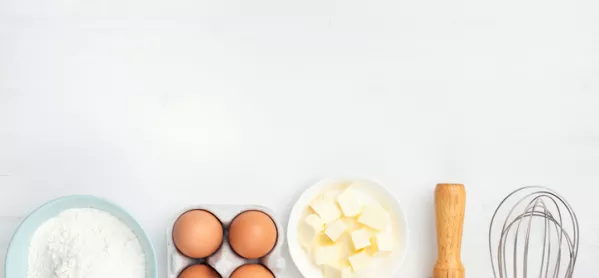- Home
- GCSE grading ‘recipes’ reveal teachers’ culinary skills
GCSE grading ‘recipes’ reveal teachers’ culinary skills

Many of us have been trying out new recipes and baking skills during lockdown.
Teachers are much the same. However, the big difference is that our own version of the Great British Bake Off has been all about choosing the right ingredients to whip up a batch of about 5 million GCSE grades and 750,000 A levels.
Rarely does a working hour pass without my computer pinging to the sound of another suggested amendment to the formula and accompanying spreadsheet.
“I think we’ve perhaps over-egged the mock exam.”
“Maybe add a drop more Year 10 assessment?”
“How doughy can the soft data be?”
It’s safe to assume that every department in the land has come up with a slightly different recipe. This will reflect not so much the varying regional tastes but more the deep-seated cultural disparities between one school department and another.
Here are a few recipes I’ve heard of being used.
Graham’s fruitcake
Let’s take, for instance, the recipe that I have received from Graham*, a head of science at a school in Yorkshire. I have known Graham for some time.
In fact, we all know Graham - one of the perfectionists of the new ranking and grading world.
In common with most science departments I know of, Graham has been regularly testing every child in the present GCSE cohort ever since the first few seconds of Year 10.
He thus has far more numerical ingredients to throw into the mixing bowl than the rest of the school put together - except perhaps for maths. (Let’s not even go there.)
Graham’s spreadsheet is a veritable fruitcake and will be the envy of many subject leaders elsewhere in the school:
Serves one GCSE student.
First, add to the bowl one tablespoon for each of the 128 different end-of-topic tests taken by the student in the first term of Year 10.
Then slowly add each of the remaining 347 tests taken later in Year 10, remembering now to double the number of spoonfuls per test to ensure the cake reflects the student’s growing academic development. Whisk and leave to settle.
Fold exactly 407g of Year 11 tests and 654g of mock exams into the mixture. Before placing the mix into the oven, dip a spoon in and check that the Year 11 ingredients are the prevailing flavour.
Bake for 23 minutes. Then leave until everyone concerned has cooled down. Then rank the student in the correct position in the cohort. Add grading later.
Graham’s baking is not to everyone’s taste. Some find it far too rich and data-heavy. They prefer something lighter and simpler.
Anna’s Victoria sponge
Anna*, for instance, is the head of history at a school in the South West. She’s a wholly inspiring teacher and leads a popular and successful subject, though she and her team have never shared the scientists’ innate enthusiasm for regular assessment across the year-group.
So she and the team have opted instead to make a plain and traditional Victoria sponge approach, using what few ingredients they could find in the larder at such short notice:
Take 2 dollops of Year 10 student exam result. Beat into this 4 tablespoons of Year 11 mock. Repeat the process for each of the other 100 students. Bake for 20 minutes.
Then add some softer, creamier data into the middle, based on performance since those mocks, followed by a sprinkling of teacher inkling on the top.
Frank’s upside-down cake
Meanwhile, Frank* in East Anglia has run a school’s small art department for about 70 years. There’s just him and a strange teaching accomplice called Miss Darrowby.
Frank’s own recipe flies unashamedly in the face of Graham and his data-dominated approach. Frank prefers to rely on native instinct, based on his many decades of experience in the kitchen.
His offering is best described as an upside-down cake - so-called because the predicted grade comes first and you then work backwards:
Take a Year 11 or Year 13 student. Lightly coat them with a grade based on the memory of their work, mixed in with the image created when closing the eyes and imagining what miracle or monstrosity that student would have produced in the exam. Repeat with the other students, then rank and grade accordingly.
Frank’s recipe is struggling to get approval from the people above. “But it’s artisan cuisine,” he retorts.
In fairness, his upside-down approach will probably prove not too far off the mark. For just as with baking, the predicting of grades is as much an art as a science - a feeling, not just a formula.
Whatever approach you’re taking, the key is for the whole thing to be as palatable to as many people as possible. Bon appétit!
Keep reading for just £1 per month
You've reached your limit of free articles this month. Subscribe for £1 per month for three months and get:
- Unlimited access to all Tes magazine content
- Exclusive subscriber-only stories
- Award-winning email newsletters



